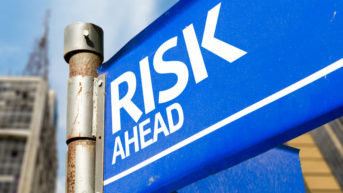In a surprise move, Alaris Royalty (TSX:AD) increased its dividend last week. If you’ve been following the company, you’ll know that it has had problems with a number of its revenue streams, which forced the company to freeze its monthly dividend since the summer of 2015 until the dividend hike last week.
A business overview of Alaris
Alaris lends money to private businesses in the form of non-voting preferred equity, which targets business owners who want to remain fully in charge of their businesses and cannot get capital from other means.
In return, Alaris gets huge monthly cash distributions from the preferred equity investments. This ensures Alaris gets a return on its investments periodically without having to rely on an exit event, such as the private businesses buying back the preferred equity.

Alaris’ top three revenue streams
Alaris generates almost 46% of its distributions from three top revenue streams: DNT (15.8% of its distributions), SBI (15.2%), and Federal Resources (14.8%).
The top three streams operate in different industries. DNT offers civil construction services; SBI offers management, consulting, sales and marketing services; and Federal Resources distributes products to federal and local agencies.
Alaris earns a yield of nearly 17% from DNT, a yield of 13% from SBI, and a yield of nearly 16% from Federal Resources. You can see why Alaris offers a yield of close to 9%. Simply by seeing how high a yield Alaris earns from its partners, investors should automatically put Alaris in a higher-risk bucket than other financial companies that pay dividends, including Bank of Montreal, which yields 3.9%, and Sun Life Financial, which yields 4.1%.
Is Alaris’ dividend safe?
In the last recession, Alaris cut its monthly dividend by more than 40%, but it has since steadily increased its dividend over time and its current dividend is now bigger than before the cut.
Last week, Alaris increased its monthly dividend by 1.85% following a contribution of US$46 million to GWM Holdings, which provides data-driven digital marketing solutions for advertisers around the world. The new contribution increases Alaris’ net cash from operation by 5.78% on a per-share basis and improves its payout ratio from almost 94% to about 90%. So, Alaris’ dividend is safer than it was before.
Since 2013, Alaris’s payout ratio has ranged from 80-94%. So, it’d certainly be more reassuring to see the payout ratio to reduce to the 80% level.
Investor takeaway
In the last recession, Alaris stock traded as low as 3.6 times cash flow, which indicates a nearly 60% downside from current levels. So, you probably don’t want to hold the stock through a recession. (However, you might consider buying it then.)







